Jin-Kao Hao
A reinforcement learning guided hybrid evolutionary algorithm for the latency location routing problem
Mar 21, 2024Abstract:The latency location routing problem integrates the facility location problem and the multi-depot cumulative capacitated vehicle routing problem. This problem involves making simultaneous decisions about depot locations and vehicle routes to serve customers while aiming to minimize the sum of waiting (arriving) times for all customers. To address this computationally challenging problem, we propose a reinforcement learning guided hybrid evolutionary algorithm following the framework of the memetic algorithm. The proposed algorithm relies on a diversity-enhanced multi-parent edge assembly crossover to build promising offspring and a reinforcement learning guided variable neighborhood descent to determine the exploration order of multiple neighborhoods. Additionally, strategic oscillation is used to achieve a balanced exploration of both feasible and infeasible solutions. The competitiveness of the algorithm against state-of-the-art methods is demonstrated by experimental results on the three sets of 76 popular instances, including 51 improved best solutions (new upper bounds) for the 59 instances with unknown optima and equal best results for the remaining instances. We also conduct additional experiments to shed light on the key components of the algorithm.
Learning-guided iterated local search for the minmax multiple traveling salesman problem
Mar 19, 2024Abstract:The minmax multiple traveling salesman problem involves minimizing the longest tour among a set of tours. The problem is of great practical interest because it can be used to formulate several real-life applications. To solve this computationally challenging problem, we propose a leaning-driven iterated local search approach that combines an aggressive local search procedure with a probabilistic acceptance criterion to find high-quality local optimal solutions and a multi-armed bandit algorithm to select various removal and insertion operators to escape local optimal traps. Extensive experiments on 77 commonly used benchmark instances show that our algorithm achieves excellent results in terms of solution quality and running time. In particular, it achieves 32 new best-known results and matches the best-known results for 35 other instances. Additional experiments shed light on the understanding of the composing elements of the algorithm.
A Multi-population Integrated Approach for Capacitated Location Routing
Mar 14, 2024
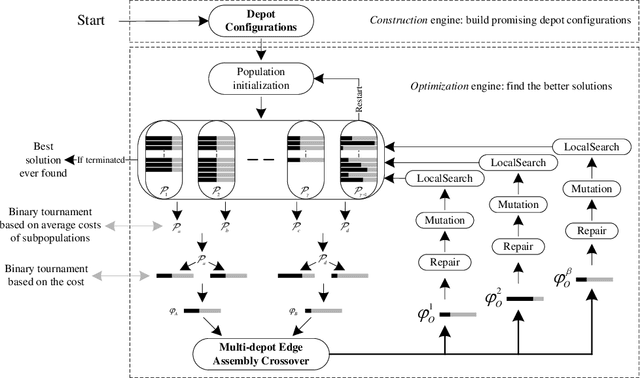
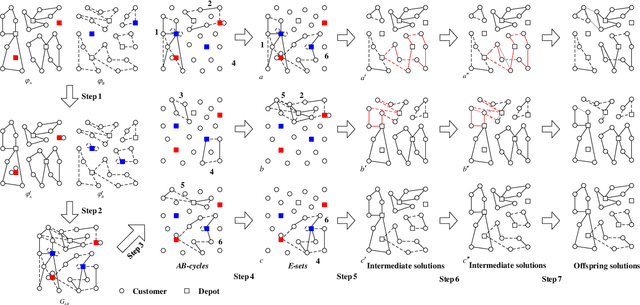

Abstract:The capacitated location-routing problem involves determining the depots from a set of candidate capacitated depot locations and finding the required routes from the selected depots to serve a set of customers whereas minimizing a cost function that includes the cost of opening the chosen depots, the fixed utilization cost per vehicle used, and the total cost (distance) of the routes. This paper presents a multi-population integrated framework in which a multi-depot edge assembly crossover generates promising offspring solutions from the perspective of both depot location and route edge assembly. The method includes an effective neighborhood-based local search, a feasibility-restoring procedure and a diversification-oriented mutation. Of particular interest is the multi-population scheme which organizes the population into multiple subpopulations based on depot configurations. Extensive experiments on 281 benchmark instances from the literature show that the algorithm performs remarkably well, by improving 101 best-known results (new upper bounds) and matching 84 best-known results. Additional experiments are presented to gain insight into the role of the key elements of the algorithm.
Deinterleaving of Discrete Renewal Process Mixtures with Application to Electronic Support Measures
Feb 14, 2024Abstract:In this paper, we propose a new deinterleaving method for mixtures of discrete renewal Markov chains. This method relies on the maximization of a penalized likelihood score. It exploits all available information about both the sequence of the different symbols and their arrival times. A theoretical analysis is carried out to prove that minimizing this score allows to recover the true partition of symbols in the large sample limit, under mild conditions on the component processes. This theoretical analysis is then validated by experiments on synthetic data. Finally, the method is applied to deinterleave pulse trains received from different emitters in a RESM (Radar Electronic Support Measurements) context and we show that the proposed method competes favorably with state-of-the-art methods on simulated warfare datasets.
Combining Monte Carlo Tree Search and Heuristic Search for Weighted Vertex Coloring
Apr 24, 2023Abstract:This work investigates the Monte Carlo Tree Search (MCTS) method combined with dedicated heuristics for solving the Weighted Vertex Coloring Problem. In addition to the basic MCTS algorithm, we study several MCTS variants where the conventional random simulation is replaced by other simulation strategies including greedy and local search heuristics. We conduct experiments on well-known benchmark instances to assess these combined MCTS variants. We provide empirical evidence to shed light on the advantages and limits of each simulation strategy. This is an extension of the work of Grelier and al. presented at EvoCOP2022.
On Monte Carlo Tree Search for Weighted Vertex Coloring
Feb 03, 2022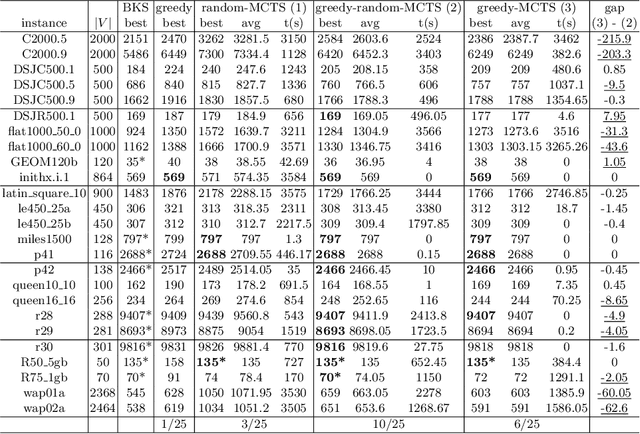
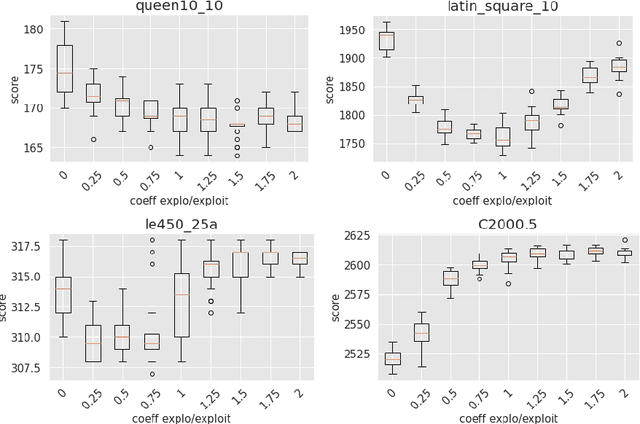
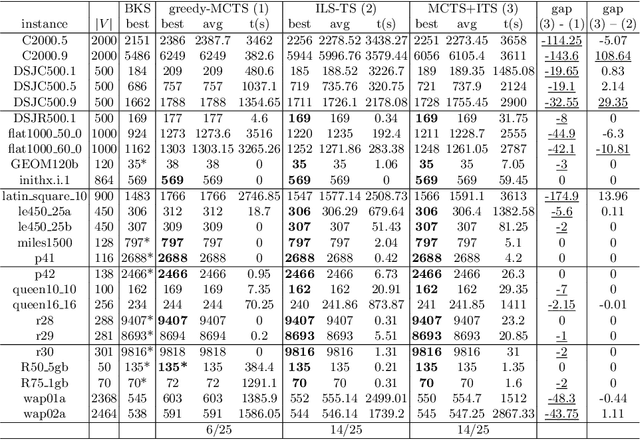
Abstract:This work presents the first study of using the popular Monte Carlo Tree Search (MCTS) method combined with dedicated heuristics for solving the Weighted Vertex Coloring Problem. Starting with the basic MCTS algorithm, we gradually introduce a number of algorithmic variants where MCTS is extended by various simulation strategies including greedy and local search heuristics. We conduct experiments on well-known benchmark instances to assess the value of each studied combination. We also provide empirical evidence to shed light on the advantages and limits of each strategy.
Heuristic Search for Rank Aggregation with Application to Label Ranking
Jan 11, 2022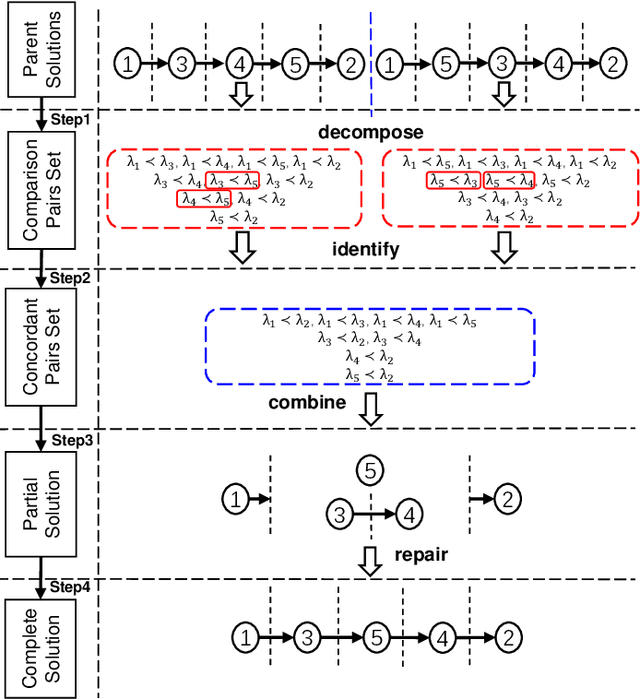



Abstract:Rank aggregation aims to combine the preference rankings of a number of alternatives from different voters into a single consensus ranking. As a useful model for a variety of practical applications, however, it is a computationally challenging problem. In this paper, we propose an effective hybrid evolutionary ranking algorithm to solve the rank aggregation problem with both complete and partial rankings. The algorithm features a semantic crossover based on concordant pairs and a late acceptance local search reinforced by an efficient incremental evaluation technique. Experiments are conducted to assess the algorithm, indicating a highly competitive performance on benchmark instances compared with state-of-the-art algorithms. To demonstrate its practical usefulness, the algorithm is applied to label ranking, which is an important machine learning task.
An effective hybrid search algorithm for the multiple traveling repairman problem with profits
Nov 09, 2021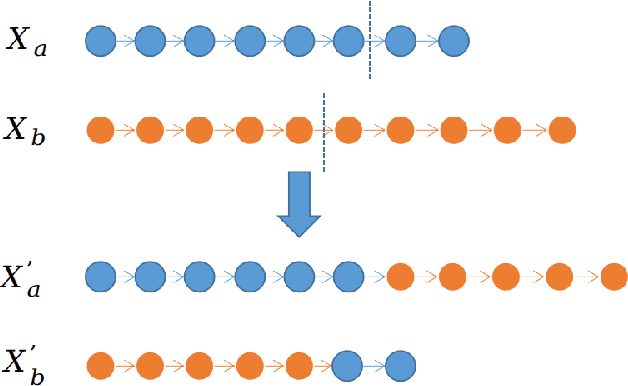
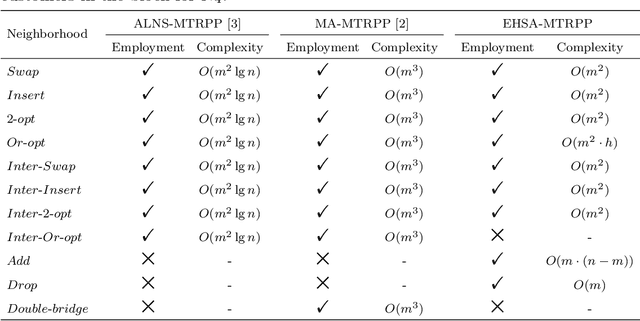

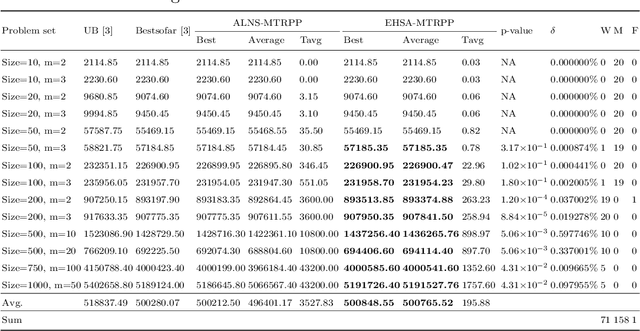
Abstract:As an extension of the traveling repairman problem with profits, the multiple traveling repairman problem with profits consists of multiple repairmen who visit a subset of all customers to maximize the revenues collected through the visited customers. To solve this challenging problem, an effective hybrid search algorithm based on the memetic algorithm framework is proposed. It integrates two distinguished features: a dedicated arc-based crossover to generate high-quality offspring solutions and a fast evaluation technique to reduce the complexity of exploring the classical neighborhoods. We show the competitiveness of the algorithm on 470 benchmark instances compared to the leading reference algorithms and report new best records for 137 instances as well as equal best results for other 330 instances. We investigate the importance of the key search components for the algorithm.
A deep learning guided memetic framework for graph coloring problems
Sep 13, 2021
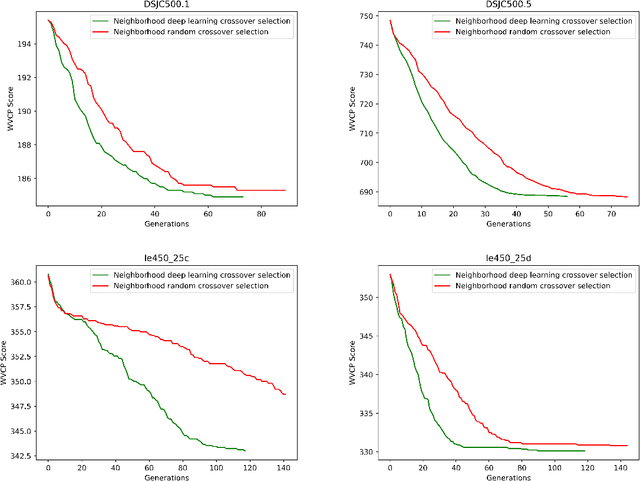

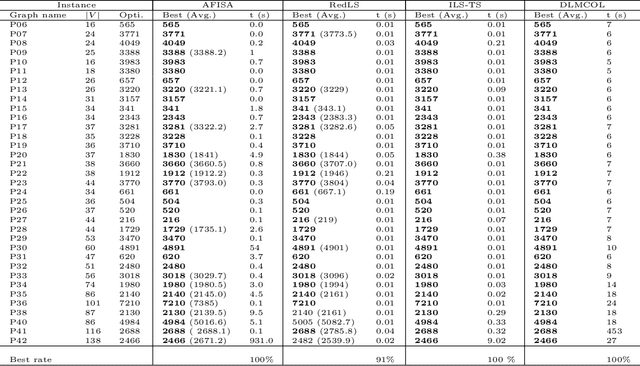
Abstract:Given an undirected graph $G=(V,E)$ with a set of vertices $V$ and a set of edges $E$, a graph coloring problem involves finding a partition of the vertices into different independent sets. In this paper we present a new framework which combines a deep neural network with the best tools of "classical" metaheuristics for graph coloring. The proposed algorithm is evaluated on the weighted graph coloring problem and computational results show that the proposed approach allows to obtain new upper bounds for medium and large graphs. A study of the contribution of deep learning in the algorithm highlights that it is possible to learn relevant patterns useful to obtain better solutions to this problem.
Massively parallel hybrid search for the partial Latin square extension problem
Mar 18, 2021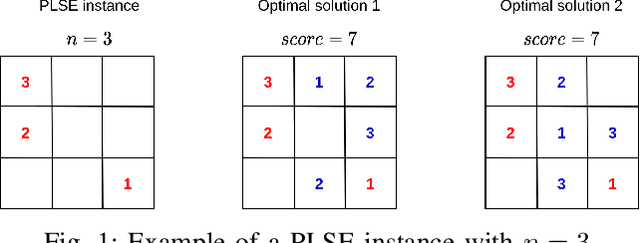
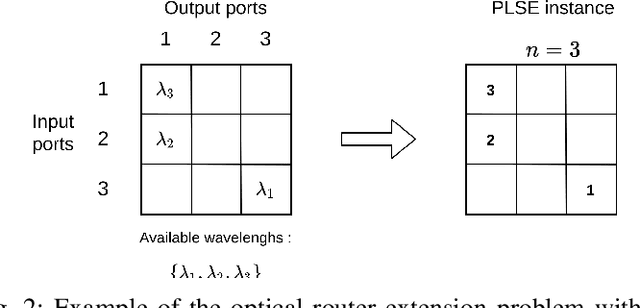
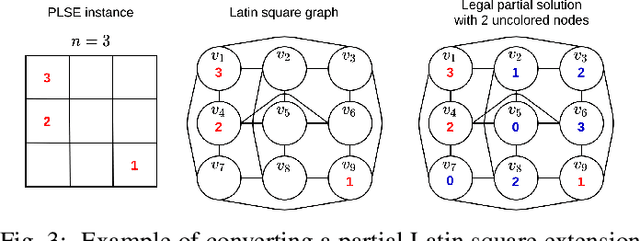
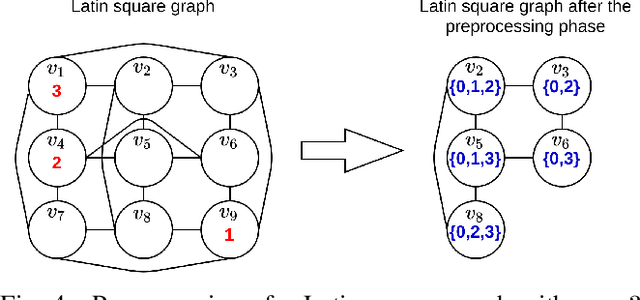
Abstract:The partial Latin square extension problem is to fill as many as possible empty cells of a partially filled Latin square. This problem is a useful model for a wide range of relevant applications in diverse domains. This paper presents the first massively parallel hybrid search algorithm for this computationally challenging problem based on a transformation of the problem to partial graph coloring. The algorithm features the following original elements. Based on a very large population (with more than $10^4$ individuals) and modern graphical processing units, the algorithm performs many local searches in parallel to ensure an intensified exploitation of the search space. It employs a dedicated crossover with a specific parent matching strategy to create a large number of diversified and information-preserving offspring at each generation. Extensive experiments on 1800 benchmark instances show a high competitiveness of the algorithm compared with the current best performing methods. Competitive results are also reported on the related Latin square completion problem. Analyses are performed to shed lights on the understanding of the main algorithmic components. The code of the algorithm will be made publicly available.
 Add to Chrome
Add to Chrome Add to Firefox
Add to Firefox Add to Edge
Add to Edge